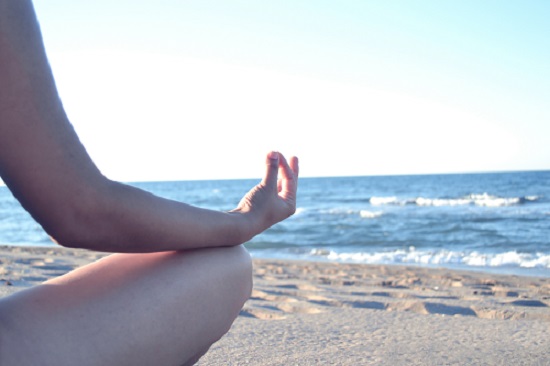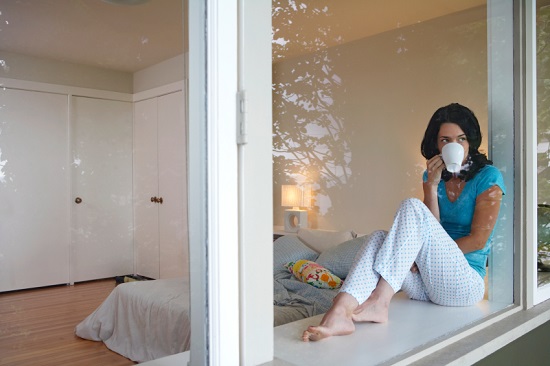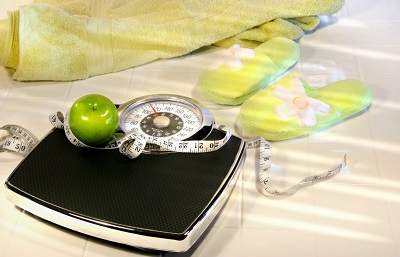Meditation for Beginners: Finding Your Focus
If you are anything like the rest of the people in the world, then your daily life has some measure of drama. It could be conflict at work or trying to find a job. Maybe there is an ongoing feud at home with your spouse, significant other or your kids. Drama can revolve around love, hate, money, jealousy, hope, hopelessness, death and so many other emotions and states. No matter what the issue, the one thing that you and others want is peace – a rest from the drama and a return to some state when everything was once more normal.

At one time or another, you may ask yourself, “How did I get here?” The answer is not always forthcoming because it’s complicated. Due to the complications of life, many people have sought a solution in meditation. What have you heard about meditation?
Most think it is some mysterious technique practiced only by monks, yogis, holy men and others who have nothing to do all day but sit around. Or, they don’t have the same problems as the rest of us living in the “real” world. At the extreme, it could be a state of being cultivated by secret societies that help them to see into the future or gain great power by teaching their bodies to do incredible things.
In reality, neither of these things (and everything in between) is true. One thing that is, is that meditation can help you and any other normal person in the world to institute a practice in their lives that can shape it for the better. Do you want to relax and reduce the stress and anxiety that you are feeling each day? Are there habits or addictions that you have battled time and time again only to find yourself facing them for the umpteenth time? What about enjoyment – are you just looking to get more out of life and feel satisfied?
Meditation is an avenue that can lead to great benefits. But, it all begins with the first step. For many people who haven’t meditated or aren’t sure what it’s all about, that first step can seem like stepping off a cliff. You want this step to be the one that leads somewhere and doesn’t just crumble beneath your feet.
So, for all of those beginners out there, you can learn to meditate and, with continued practice, you can see the benefits manifest themselves in your lives.
In this article you will learn what meditation is. We remove the smoke and mirrors to help you get a handle on why it could become an integral part of your life. You will also learn why others meditate and if these reasons match your own.
Don’t forget the benefits of meditation. People have been touting them for years but just maybe you haven’t heard them yourself. Find out the various types of meditation that you can participate in as well as valuable tips for the meditation beginner that will help you to keep up the practice even if you grow frustrated.
Just like everything else in your life, give the practice of meditation a thorough and full-hearted try before deciding that it is or isn’t worth your time. You might be pleasantly surprised at what can happen if you don’t give up and hang in there. So, let’s find out how you can find your focus through meditation.
Table of Contents
WHAT IS MEDITATION?
Meditation is the “practice of mindfulness.” What does that mean? It means “being present at all times.”
Still confused? When was the last time that you paid attention to everything that was said or everything that you did during the day? Most of the time we are attempting to multitask every area of our lives while getting the groceries, writing that report for work, picking up the kids from soccer practice, making dinner, watching the news or even getting ready for bed.
It’s no wonder all humans acquainted with technology and a fast pace of life have not lost the ability to concentrate. What do most people do while waiting in line, eating lunch or dinner, or watching television? They are fiddling with some type of technology.
Now, we are not knocking tech. It has enhanced our lives considerably. Every once in a while, it is good to “get away from it all” to regain your focus.
Mindfulness is nothing more than learning to be “present, in the moment.” When you watch television, that activity consumes your focus (that’s an easy one). When you are having dinner with your family, you are paying attention to them, the food, the conversation and the feelings you have during these times.
Narrowing your focus in this way can have widespread benefits for your life overall. One of the characters in the movie, “Buckaroo Banzai: Across the 8th Dimension” said, “Wherever you go, there you are.” At first it seems not to make sense. Of course you are wherever you are, physically. But, the mind is another thing entirely.
Reasons to Meditate
Why do people meditate? It is not because they have lost touch with reality or are beatniks from a bygone era. In fact, those who meditate may arguably have a better connection with reality of life than the rest of us. Their eyes may be a bit clearer.
Here are a few of the reasons why people meditate:
* Stress reliever
* Religious reasons
* Greater self-control
* Relaxation
* Increased Productivity
* Peace of mind
* Achievement of goals
* Getting to know yourself better
You may have your own reasons for wanting to give it a try. So, here are some other reasons that you meditation is a plausible idea.
Benefits of Meditation
We also discussed the benefits of meditation in this article.
Health – According to those who you have meditated, they have noticed such health benefits as: lower blood pressure and cholesterol, reduced stress, lower anxiety levels, ability to break addictive behaviors and unhealthy habits, as well as reducing chronic pain and increasing memory.
Focus – When you can concentrate on the task at hand, the results are astounding. They may include: clearer thinking through problems at work and at home, improved creativity, greater confidence, better memory, more productivity at work and at home, improved accuracy when performing tasks at work and goal achievement.
Productivity – We mentioned to this one above. Getting more done at work and at home creates a sense of accomplishment that can add to your self-worth and your sense of purpose in this life. You are more satisfied when that to-do list is whittled away instead of looking at several undone tasks that can make you feel like a failure.
Mindfulness – This is the main purpose of meditation – the practice of being present. One begins to notice not only those things that are going on around them, but also what is happening within yourself. Are you seeking a greater understanding of self? Then mindfulness is a direct route to the source. With it, everything else falls away save the activity that you are participating in at the moment. One can argue that you can enjoy life more when you allow yourself to become a part of it.
Spiritual awareness – Whether you are religious, spiritual or none of these things, there is another side to all of us. Many religions have different names for the soul or spirit but they all believe that it exists. For centuries, those who closely guarded the secrets of meditation, sought to connect with their Higher Power through their soul. They claim to have gained insights beyond that of normal humans because they learned to travel to a higher plane of existence. For us today, that means becoming so focused that we get to know ourselves intimately in relation to our religious deity so that our purpose coincides with theirs.
TYPES OF MEDITATION
If you are new to meditation, it can be a little difficult to choose how to go about it. There are so many variations on the theme that you can get lost and frustrated before you’ve even began the process. So, here are a few of the ways that you can get started as a beginner.
Seated meditation – This can be done on the floor or while sitting in a chair. The point is to find a sitting position of comfort. You can sit on a pillow or on the floor if that is okay for you. If you are concentrating on your aching back, you won’t be thinking about your breathing.
Place your feet in a comfortable position as well. You don’t have to practice the lotus position if you can barely stand to cross your legs. There is not a set position for meditation. If it is not comfortable, try something else. Do be sure to sit with proper posture which is conducive for good deep breathing.
Walking meditation – If you have time at lunch or after dinner, take a walk and meditate. Instead of thinking about what you will do next or about your day, concentrate again on your breathing. When your focus strays to bothersome thoughts, gently bring it back by counting your breaths.
Guided meditation – For beginners, it may be easier to get a handle on things by listening to a CD or mp3 of a guided meditation. They often give step by step instructions to help you as you begin what will hopefully become a healthy habit in your life. Choose an audio recording that suits your needs and purpose for meditating.
Focused meditation – This type of meditation usually uses some sort of object as a focal point to help keep your mind from wandering. It can be a gentle way of redirecting your thoughts back to the matter at hand. Different implements include: candles, soft music, natural sounds, incense, a mantra or a religious object.
Laying meditation – It is often called the “corpse pose.” Lying down is to strictly recommended for beginners because of the fact that you might fall asleep. You lie in a supine position with arms at your sides, palms facing up. It is the most relaxing of the meditation positions because you need to work harder to stay alert.
HOW TO MEDITATE
Getting Started
When you are ready to begin meditation, you need one thing that can help you but also keep you motivated – your reason for meditation. What is the purpose of participating in meditation for you? We have given a list of reasons why others meditate, but only your personal one will sustain you during the awkward first stages of the process.
And, it will be awkward. Meditation seems simple: sit, breathe and try not to fall asleep. The benefits you want to achieve come from continued practice. It will take time to cultivate an attitude that you will meditate each day no matter where you are or what is going on around you.
Choose a meditation type that will work for you. It is purely based on what will be easiest to help you get into the practice and then work to maintain it. Most start with either sitting meditation or a guided meditation. You can focus on a guided meditation that speaks to a particular problem or habit as well.
Prepare yourself for meditation. If you choose early morning, then get up at least 30 minutes earlier than normal so that you won’t be rushed by your normal routine. Resist the urge to drink or take any type of medication like pain killers before a session. You want to put your best self forward so that you get the most out of meditation.
Wait at least two hours after you eat. A full stomach can be a distraction. Don’t do it on an empty stomach either as this can be equally as distracting.
Choose a restful place to meditate. Avoid rooms where you work, exercise or sleep. Sleep is a big barrier to meditation so stay out of the bedroom. You can choose an outdoor spot also as long as you won’t be disturbed.
The Process
Sit comfortably in the room or space that you have chosen. Make sure that your back is erect and you are not slouching. Choose a position where you can sit still for any length of time.
Begin with a two-minute meditation. It doesn’t seem like long enough, but you will find that your mind can wander in as little as 30 seconds. Over time, as your mind wanders less and less, you can increase the time frame.
Focus on your breathing. Notice how long it takes you to inhale through your nose and exhale through your mouth. Ideally, you want to exhale longer than you inhale to bring more fresh air into your lungs. Deep breathing is important because it increases circulation, lowers your heart rate and pulse as well as decreasing tension and anxiety as you work on mindfulness.
Maintain a soft unfocused gaze on the ground in front of you. If your mind begins to move away from your breathing (and it will), gently acknowledge your thoughts and guide them back to your breathing. Acknowledging the chatter can help it to decrease quicker than berating yourself for letting your mind travel in the first place.
Use a timer of some sort to keep track of your daily meditation time. This will help you increase it as needed while avoiding spilling over into another task. Spend a couple minutes reflecting on what you have learned in each session after it is completed. Again, don’t berate yourself cut be grateful that you are learning to redirect your mind when it goes astray.
This same process can be used with various types of meditation. With the guided meditation, the experienced meditation practitioner on the tape will let you know how to conduct your sessions.
MEDITATION TIPS
When it comes to meditation, there is more than one way to accomplish it. These tips can help you to enhance your experience. Know that it won’t be easy. You may feel frustrated or like giving up. In a word: don’t.
Resist the urge to expect perfection from the beginning. You won’t achieve it right off the bat. It can take weeks or months of constant practice before you are even able to get your mind somewhat in line. But, if you are true to your purpose for doing this in the first place, it will be worth the effort.
Tip #1 – Meditate daily. Find a time that suits you and keep that general time each day for your meditation. Repetition promotes habits that will stick.
Tip #2 – Use a trigger. This means associate your meditation time with another activity. You get up in the morning to go to work. Get up earlier to accommodate your meditation. If you walk after dinner, turn it into a walking meditation time.
Tip #3 – Stretch before sitting down. Stretching gets the muscles loose before you prepare to sit, walk, lie down or stand for your meditation. It can also help you focus.
Tip #4 – Meditation is an active process. You are actively focusing on your breathing and actively learning to control your thoughts. You work to understand yourself better and practice mindfulness.
Tip #5 – Pay attention to your breathing. As you exhale, imagine the air dispersing into your surroundings. As you inhale, feel the air coming into your nose, into your throat, down your windpipe and into your lungs. Hear it; feel it; see it.
Tip #6 – Choose a place where you can be alone – Interruptions are not conducive to a good session. They can increase anxiety. Let others know that this is your meditation time so you will not be disturbed. Try to use the same area all the time to gain familiarity and a sense of privacy and intimacy.
Tip #7 – Turn off the phones – Even a buzzing from your cell phone can jar you from a deep meditation. Take the opportunity to turn off your technology so that you can commune with yourself.
Tip #8 – Feel your body. Know that the air you fill your lungs with is being carried by the bloodstream and then permeating each organ it encounters. Visualize it passing all throughout your body. Visualize each muscle relaxing from your toes all the way up to your neck and face.
Tip #9 – Read a book on meditation. For beginners especially, it can help you gain more insight into the history and present day practice of meditation. Learn other options for meditation styles (Buddhist, Indian).
Tip #10 – Meditate with a partner or group. There is strength and assistance in groups. Find someone else who has made the commitment to this process just like you and meet with them.
Tip #11 – Ignore frustration – It will come so don’t worry about it. Even if you spend the entire session wrangling in your mind, then you have learned something. You are one step closer to greater self-awareness and the other benefits of practicing meditation.
Tip #12 – Dim the lights – You don’t want to be greeted with bright lights especially if you meditate with your eyes closed.
Tip #13 – Seek guidance if you need it. Before you decide to throw in the towel, seek professional help from a trained meditation expert. They might be able to help you to fine tune your process for better results.
Tip #14 – Wear comfortable clothing. You don’t want to practice in tight jeans or a sweater that makes you sweat. Clothes should breath and keep your body at a comfortable temperature.
Tip #15 – Practice mindfulness in other areas of your life. Whether you are writing, shopping, cleaning, laughing or driving, learn to live in the moment. Notice everything around you, how it looks, feels and what emotions you express.
These tips will help you get started on your meditation journey. Remember, it is a journey, so the arriving at the destination is not as important as what you learn along the way.
CONCLUSION
Meditation can help you find your focus in life: at work, at home or within yourself. It is a process that was once guarded by holy men but has been shared with the world for the benefit of all. Learn to practice mindfulness as you go throughout your day when you cultivate the habit of participating in regular meditation.
The process is not mystical or magical but a way to regain touch with you and your reality. It can be a key to happiness, satisfaction, purpose, productivity and a better understanding of life itself.






